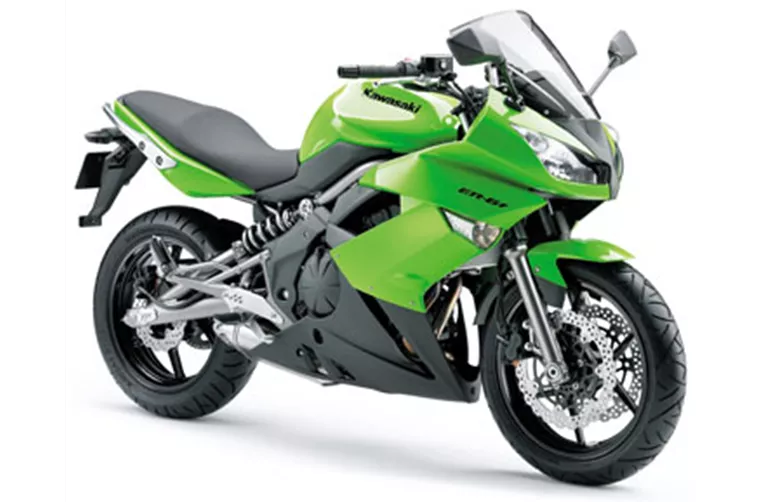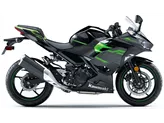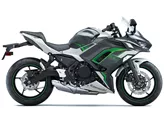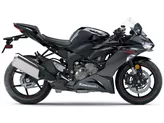Kawasaki ER-6f 2009 vs. Kawasaki Ninja 650 2017

Kawasaki ER-6f 2009

Kawasaki Ninja 650 2017
Visão geral - Kawasaki ER-6f 2009 vs Kawasaki Ninja 650 2017
The Kawasaki ER-6f model year 2009 and the Kawasaki Ninja 650 model year 2017 share many similarities in their technical specifications. Both models have an inline engine with the same bore and stroke measurements of 83mm and 60mm respectively. They also have the same displacement of 649cc and feature a 4-stroke, 2-cylinder configuration. In terms of chassis, both motorcycles have a steel frame and dual disc front brakes. The diameter of the front and rear tires is also the same at 17 inches.
However, there are some notable differences between the two models. The Kawasaki ER-6f 2009 has a more powerful engine, producing 72 horsepower compared to the 68.2 horsepower of the Kawasaki Ninja 650 2017. The ER-6f also has a higher torque rating of 66 Nm compared to the 65.7 Nm of the Ninja 650. Additionally, the ER-6f has a higher compression ratio of 11.3 compared to the 10.8 of the Ninja 650.

Kawasaki ER-6f 2009
In terms of dimensions and weights, both motorcycles have the same front and rear tire diameter of 17 inches. However, the Kawasaki ER-6f has a slightly lower seat height of 785mm compared to the 790mm seat height of the Ninja 650. The ER-6f also has a larger fuel tank capacity of 15.5 liters compared to the 15 liters of the Ninja 650.
When it comes to strengths, the Kawasaki ER-6f 2009 is praised for its powerful sound, mobility, reasonable price, visually sophisticated design, and safe riding experience. It is also considered beginner-friendly. On the other hand, the Kawasaki Ninja 650 2017 is commended for its transparent sport chassis, playful and humorous handling, excellent brakes, elegant appearance reminiscent of the ZX-10R, and a durable engine.

Kawasaki Ninja 650 2017
However, there are some weaknesses associated with each model. The Kawasaki ER-6f 2009 is criticized for its 72 horsepower not being enough for some riders. On the other hand, the Kawasaki Ninja 650 2017 is said to have a lack of sound from the exhaust system and slight vibrations from the engine.
In conclusion, while both the Kawasaki ER-6f 2009 and the Kawasaki Ninja 650 2017 have similar technical specifications, there are some differences in terms of power, torque, compression ratio, seat height, and fuel tank capacity. Each model has its own strengths and weaknesses, catering to different preferences and riding styles.
Especificações técnicas Kawasaki ER-6f 2009 em comparação com Kawasaki Ninja 650 2017
Prós e contras em comparação
Prós e contras em comparação
Kawasaki ER-6f 2009
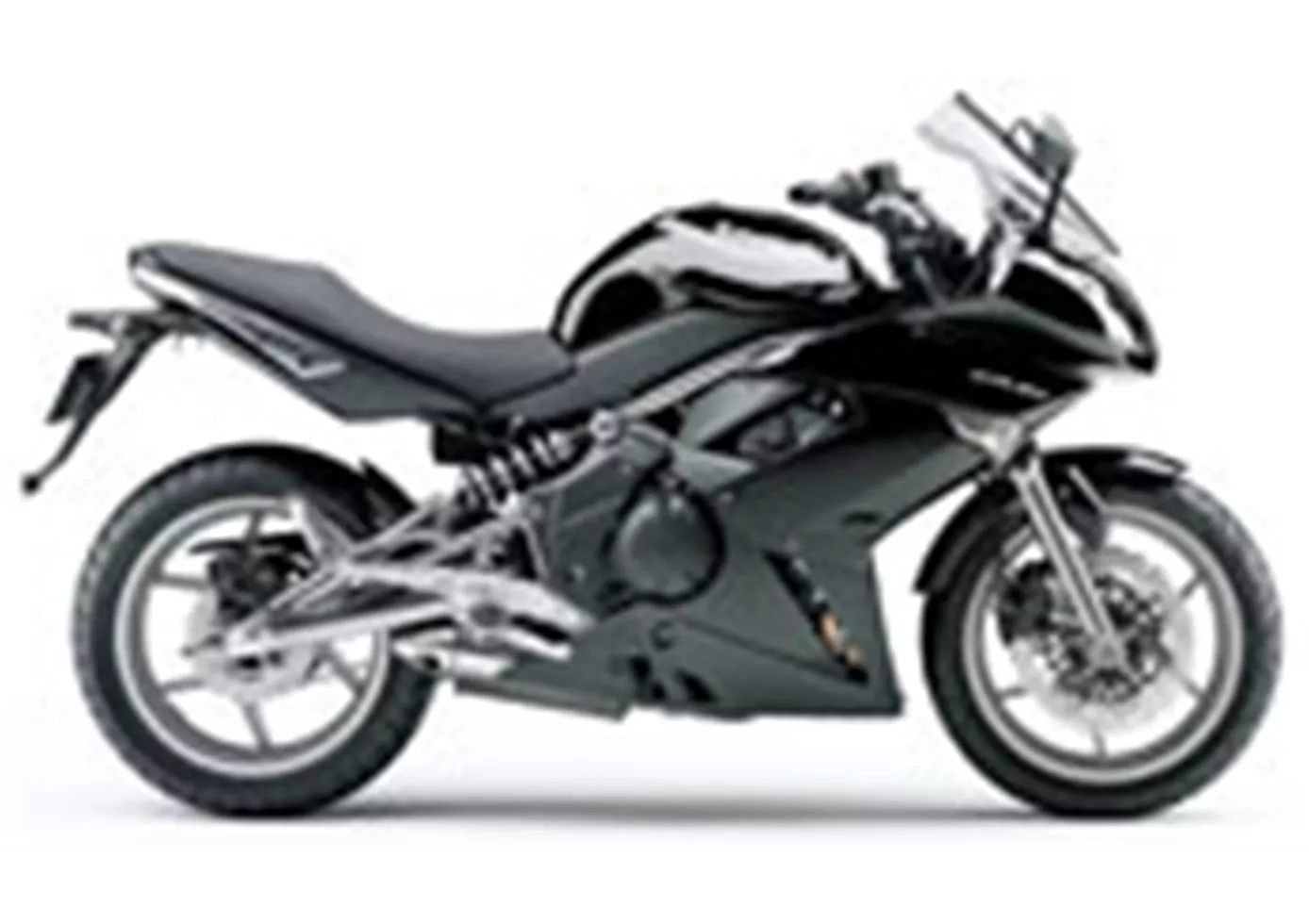
Quer seja no caminho monótono para o trabalho ou em passeios prolongados, a posição de assento confortável, os dois cilindros em linha silenciosos e de baixa vibração e a agilidade no movimento angular proporcionam prazer de condução em todas as situações.
Kawasaki Ninja 650 2017

A Ninja 650 é um selo firme da sua antecessora (Er-6f). O motor dominou bem a barreira do Euro 4 e oferece 68 cv muito úteis, o chassis é simplesmente fantástico para esta classe e a redução de peso de 18(!) quilos em comparação com a ER-6f justifica acenos de cabeça reverentes.
Comparação de preços Preço médio de mercado Kawasaki ER-6f vs Kawasaki Ninja 650
There are a few key differences between a Kawasaki ER-6f 2009 and a Kawasaki Ninja 650 2017. It takes less time to sell a Kawasaki ER-6f with 70 days compared to 96 days for a Kawasaki Ninja 650. Since model year 2006 1000PS.de editors have written 7 reviews for the Kawasaki ER-6f and 20 reviews for the Kawasaki Ninja 650 since model year 2017. The first review for the Kawasaki ER-6f was published on 25/01/2006 and now has more than 30 200 views. This compares to more than 79 600 views for the first review on Kawasaki Ninja 650 published on 04/10/2016.
